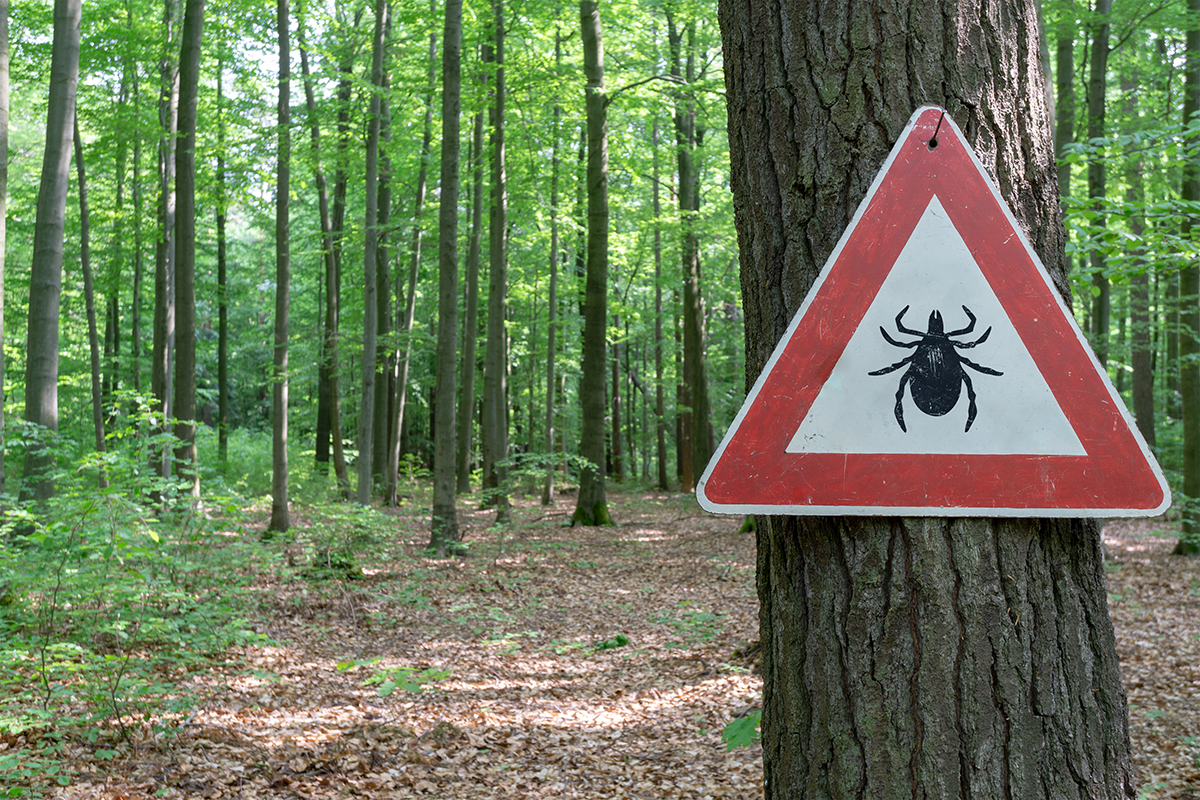
Popular Locations
- Yale New Haven Children's Hospital
- Yale New Haven Hospital - York Street Campus
- Yale New Haven Hospital - Saint Raphael Campus

Published June 09, 2022

Ticks may be known for spreading Lyme disease in Connecticut, but there are several other illnesses that can be found in the region. Proper tick prevention during the spring and summer months can help keep you safe.
Marjorie Golden, MD, associate professor of clinical medicine at Yale School of Medicine and site chief of infectious disease at Yale New Haven Hospital’s St. Raphael Campus said in addition to Lyme, anaplasmosis and babesiosis are the most common tick-borne illnesses found in Connecticut.
“All three are spread through the deer tick and in fact if you’re unlucky enough, you can get all three from one tick bite,” Dr. Golden said.
Another tick-borne illness called Powassan virus is also causing some concern in Connecticut. Dr. Golden explained the differences between all four, and the symptoms to look out for.
Unlike Lyme, which is caused by bacteria, Powassan is caused by a virus. It is in the family of flaviviruses, which also includes West Nile, Dengue and Zika. Powassan can cause inflammation of the meninges, which is the thin covering over the brain or the brain itself, causing encephalitis.
Powassan is rare, with only 10 cases reported in Connecticut by the CDC between 2011 and 2020. In addition to fever and headache, symptoms can include vomiting, confusion, seizures, loss of balance and trouble seeing. Patients who experience these symptoms should go to the emergency department.
Unfortunately, there is no treatment available, and patients can only receive supportive care. In about 50% of patients, long-term effects can include cognitive difficulties and memory issues.
The symptoms of Lyme disease differ depending on the stage of illness. Early Lyme occurs a couple of days to a month after the initial tick bite. Symptoms can include fever, chills, headache, body aches, joint pain, swollen glands, and the classic bullseye rash.
Early disseminated Lyme can occur a couple of weeks to a couple of months after infection. Symptoms can include Lyme arthritis, Bell’s Palsy, headache, and memory loss. Late disseminated Lyme can occur months to years after the untreated bite and can result in irregular heartbeat, joint pain, difficulty thinking and remembering.
Thankfully, Lyme can be treated early with a short course of antibiotics such as doxycycline or amoxicillin. Patients struggling with the symptoms associated with late-stage Lyme may not benefit from long-term antibiotic use but could find symptom relief with holistic treatments such as acupuncture. However, Dr. Golden warns there are predatory providers who give people all kinds of unproven and expensive therapies.
“It’s unfortunate because they’re preying on people who are suffering,” she said.
Anaplasmosis can be a very severe illness and can look like acute meningitis, with symptoms including fever and severe headache. One hallmark of this illness is a low blood count, which would be unusual for Lyme alone.
Doxycycline can help treat anaplasmosis and Dr. Golden said in many cases, patients can feel significantly better in as little as 24 hours.
Babesiosis infects red blood cells and causes the destruction of red blood cells. Therefore, patients with babesiosis may get severe anemia. Many patients heal on their own and do not need to be treated. It can however result in severe disease in certain patients such as the elderly, those without a spleen and those with cancer.
While there are tick panels that can look at babesiosis, anaplasmosis and Lyme, Dr. Golden said they are often unnecessary due to the distinct characteristics of each one. If a patient has a normal blood count, for example, it makes more sense to conduct specific testing for Lyme.
The best way to prevent tick-borne illnesses is to try to avoid tick bites. Dr. Golden recommends these tips:
Lastly, if you have symptoms such as fever or headache, don’t rush to assume you have COVID-19 or the flu. Get tested for COVID-19 but also talk to your doctor for further evaluation. Treatments can be helpful in many tick-related cases.